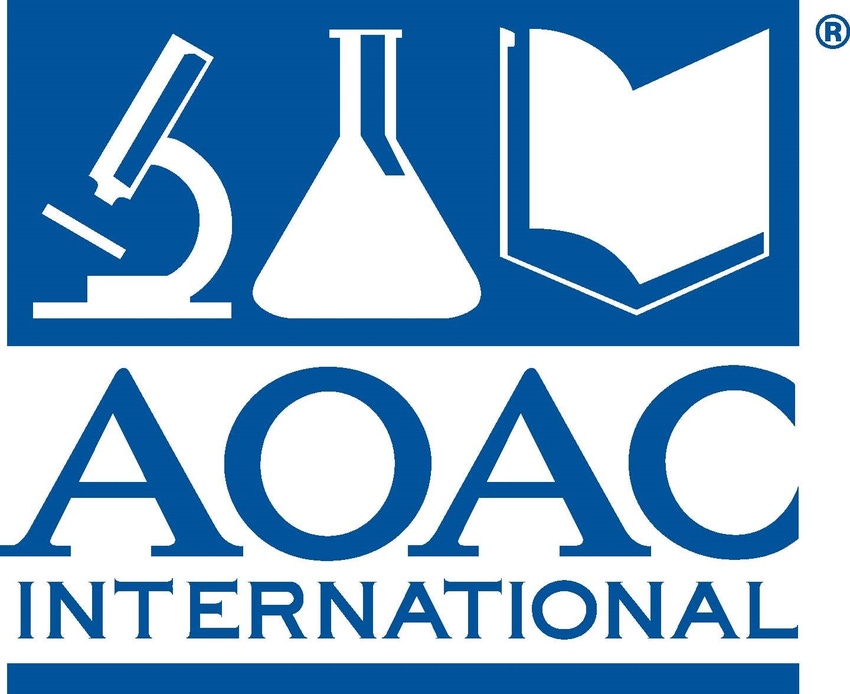As part of the annual AOAC International Mid-Year Meeting, AOAC and industry stakeholders will lead an effort to establish voluntary consensus standards for high-priority ingredients.
March 3, 2015

On March 16 to 20, 2015, as part of the 5th Annual AOAC International Mid-Year Meeting, AOAC and industry stakeholders will lead an effort to establish voluntary consensus standards for high-priority ingredients, with the goal of Official Methods. Under AOAC’s latest five-year contract with the National Institutes of Health/Office of Dietary Supplements, the initiative is expected to result in standard method performance requirements (SMPRs) for 25 priority dietary supplement ingredients that reflect the needs of the dietary supplements community. Key to the project is industry engagement and participation to help ensure that efforts are up to date and relevant.
From stakeholder panels and working groups to expert review panel (ERP) activities, the AOAC stakeholder process has resulted in significant progress in new standards and modern methods for the analytical sciences communities. Some potential outcomes of the 2015 AOAC Mid-Year Meeting for dietary supplments include:
Approval of SMPRs for Mitragyna speciosa (kratom), Folin C, cinnamon, and ashwagandha
Development of draft SMPRs for vitamin D, tea, and aloe
“This is an exciting project, analytically and from the standpoint of societal, industrial, and governmental need,” said AOAC Executive Director James Bradford. “AOAC’s previous work in the dietary supplements area has resulted in an impressive list of methods adopted, botanical identification guidelines, including a statistical model for the validation of qualitative botanical identification methods, and standards for anthocyanins, chondroitin, and PDE5 inhibitors, among others. Sound, science-based solutions can help level the playing field for the dietary supplements industry’s problem of inferior products and the need for standardized testing methodology.”
The analysis of complex dietary supplements poses many challenges. For example, dietary supplements are often mixtures of large numbers of compounds. Further, compounds of dietary supplements are often unstable, making extraction difficult and posing reference material challenges. Methods are needed with analytical ranges appropriate to everything from raw materials to finished products. There is a lack of uniform industry test standards necessary to help resolve the safety, quality, and regulatory issues that follow as a result.
In response, through its standards development process, AOAC engages the dietary supplements industry to develop voluntary consensus standards in an effort to standardize and modernize methods. AOAC leverages networks and dietary supplements stakeholders for industry outreach and engagement. AOAC encourages industry to participate to help drive and move the effort forward and ensure that the work is relevant.
The overall objectives of the contract are to provide ODS with “a stakeholder-informed master list of dietary supplement ingredients/finished products for which scientifically valid methods are lacking; to use a formal process to set stakeholder-informed priorities for the order in which method needs identified in the master list will be addressed; and to provide consensus driven expert guidance in selecting individual high-priority methods to become candidate methods for future validation studies.”
The AOAC process
An advisory panel, comprised of key experts and stakeholders from industry, government, and academia, identifies and prioritizes 25 dietary supplement ingredients/finished products for which systematically reviewed analytical methods are needed.
A stakeholder panel, through smaller, topic-specific working groups, develops fitness-for-purpose statements, clearly stating the intended use of the methods. Working groups examine analytical issues and needs and develop draft SMPRs for the priority ingredients. SMPRs are voluntary consensus standards that describe the minimum performance criteria that methods must meet or exceed. SMPRs are developed by stakeholders in a highly controlled process that ensures that users, research organizations, government agencies, technology providers, and consumers work together to create a standard that meets the requirements of the user community.
Draft SMPRs are posted on the AOAC website for an open comment period, and all comments are carefully reviewed and reconciled, if necessary. SMPRs are reviewed and, if successful, approved by the stakeholder panel.
SMPRs are the valuable result of AOAC’s standards development activities and are integrated into the AOAC Official Methods systematic review process in which ERPs have the authority to adopt methods that meet SMPRs. Once SMPRs are approved by the stakeholder panel, AOAC issues a call for methods and experts. ERPs, which are thoroughly vetted by the Official Methods Board (OMB), evaluate the best candidate methods against SMPRs for possible adoption as First Action Official Methods.
Approved SMPRs and First Action Official Methods are codified and published in the Journal of AOAC International and Official Methods of Analysis.
Next steps
On Sept. 5, 2014, the AOAC Stakeholder Panel on Dietary Supplements (SPDS) introduced and began standards development activities for ashwagandha, cinnamon, Folin C, and Mitragyna speciosa (kratom). Working groups have developed draft SMPRs, which are anticipated to be reviewed for possible approval by SPDS in March 2015 during the AOAC Mid-Year Meeting. Once SMPRs are approved, AOAC will then issue calls for experts and methods for the ingredients.
In addition, as part of the Mid-Year Meeting, working groups are expected to begin standards development activities for three new ingredients identified as priority by an advisory panel in December 2014: vitamin D, tea, and aloe. Working group chairs will provide an overview of their respective ingredients, including background information, technical issues, regulatory requirements, available methodology, and more. Working groups will then develop draft fitness-for-purpose statements, which will be reviewed by SPDS for possible endorsement, and begin developing draft SMPRs.

You May Also Like


